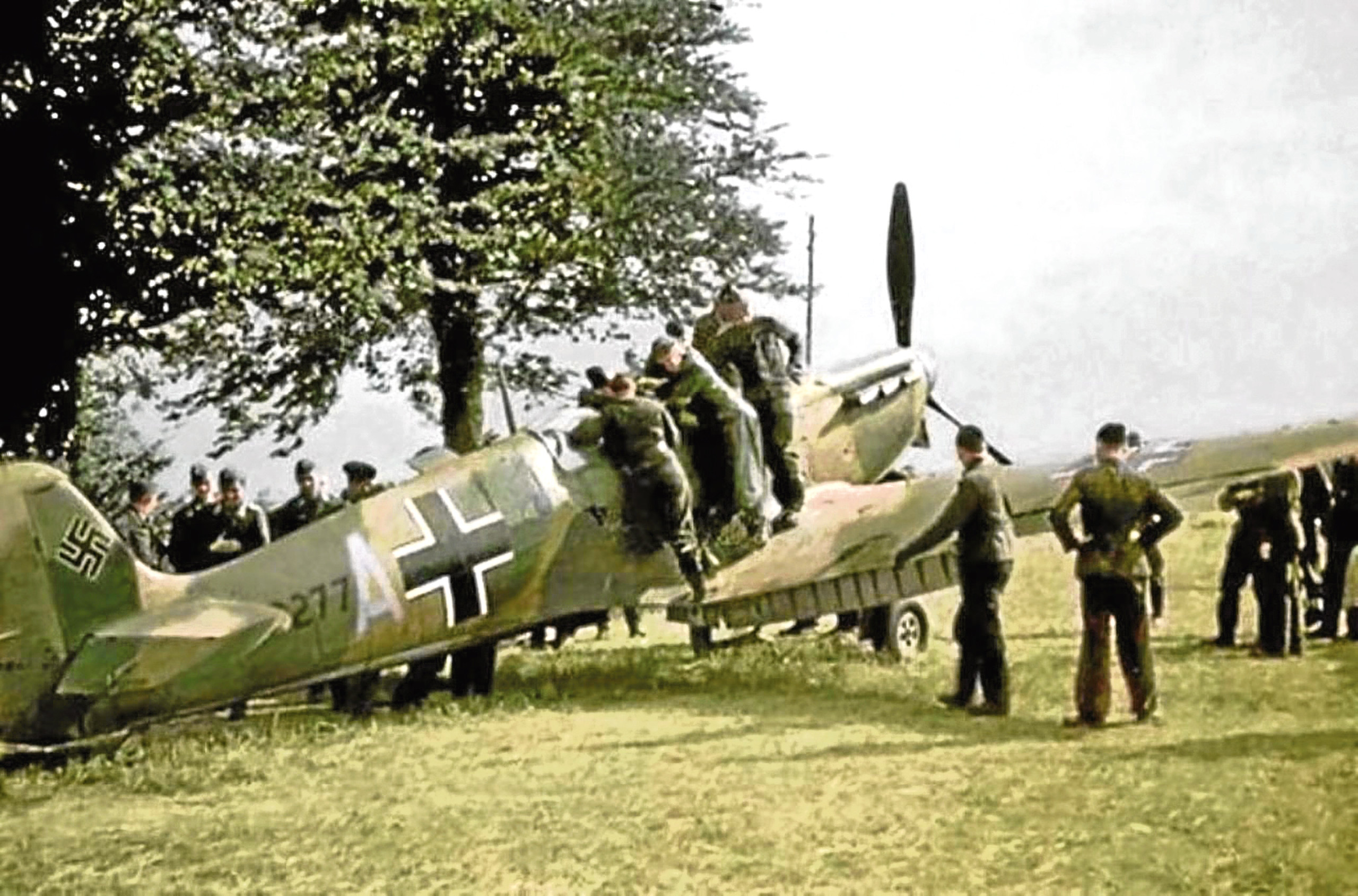
SOME Battle of Britain heroes have become household names.
Douglas Bader and Sailor Malan are just two of “The Few” whose exploits became legendary.
But Pat Hughes isn’t as well known as many of the other pilots of RAF Fighter Command who held the Luftwaffe at bay in the fateful summer of 1940.
And that’s despite the spitfire pilot being the leading Australian ace of the Battle and one of the Top 10 highest-scoring pilots of the time, shooting down a total of 17 German aircraft, including at least six in his final three days.
But the reason for Pat’s relative anonymity is a tragically-common one.
He was killed in action at the height of the Battle, aged just 23, and leaving behind Kay, a war widow he’d married barely five weeks previously.
“People don’t know too much about him because he died early on,” explains Dennis Newton, author of a new book on his fellow Aussie’s short life.
“The heavy part of his combat career was really only from August 15 through to September 7 when he was killed, though he managed to shoot down 15 German planes in that time.
“And he mainly shot down Messerschmitt 109s, the Spitfire’s greatest foe, because he was stationed in the middle of the south coast, so his unit, No 234 Squadron, had time to climb above the bomber stream and tangle with their escorts.”
Pat had joined the Royal Australian Air Force as a cadet, but in those years, the RAF was anxious to build up its strength and he took advantage of a scheme whereby Australian, New Zealand and Canadian pilots were offered the chance to go to Britain on a short-service commission.
“He started the Battle of Britain at St Eval in Cornwall before the squadron was transferred to Middle Wallop, which was right on the front line of the Battle and things really hotted up,” says Dennis.
“His best day was when he shot down three Messerschmitt 110s on September 4, three days before he died.
“He shot down two 109s the next day, and at one stage, it was thought he’d shot down Franz von Werra, the so-called one that got away because he was the only PoW to escape back to Germany, but that’s not the case.”
Despite his tender years, Pat was effectively acting as squadron CO at the height of the battle.
As Dennis explains: “He was a flight commander, but there was a bit of a crisis of command in the squadron, for reasons probably best not gone into, and the squadron leader was obliged to retire and another of the flight commanders resigned.
“So Pat was last man standing and basically leading the squadron with everyone looking to him for leadership.”
Mystery surrounds exactly how Pat was killed, as Dennis adds: “We’re not quite sure whether he was a victim of ‘friendly fire’, but my conclusion is he got too close to his target, a Dornier bomber, which is what his practice was when he was attacking and was hit by wreckage.”
Pat’s pet Airedale terrier, Flying Officer Butch who sometimes flew with him against regulations, ran out of the officers’ mess on the day his master died and was never seen again.
A Spitfire Pilot’s Story by Dennis Newton is published by Amberley Books.
READ MORE
Spitfire returns to the skies to mark 80th anniversary of first flight
Home Fires’ devastated cast and crew join furious viewers who are upset at its cancellation

Enjoy the convenience of having The Sunday Post delivered as a digital ePaper straight to your smartphone, tablet or computer.
Subscribe for only £5.49 a month and enjoy all the benefits of the printed paper as a digital replica.
Subscribe